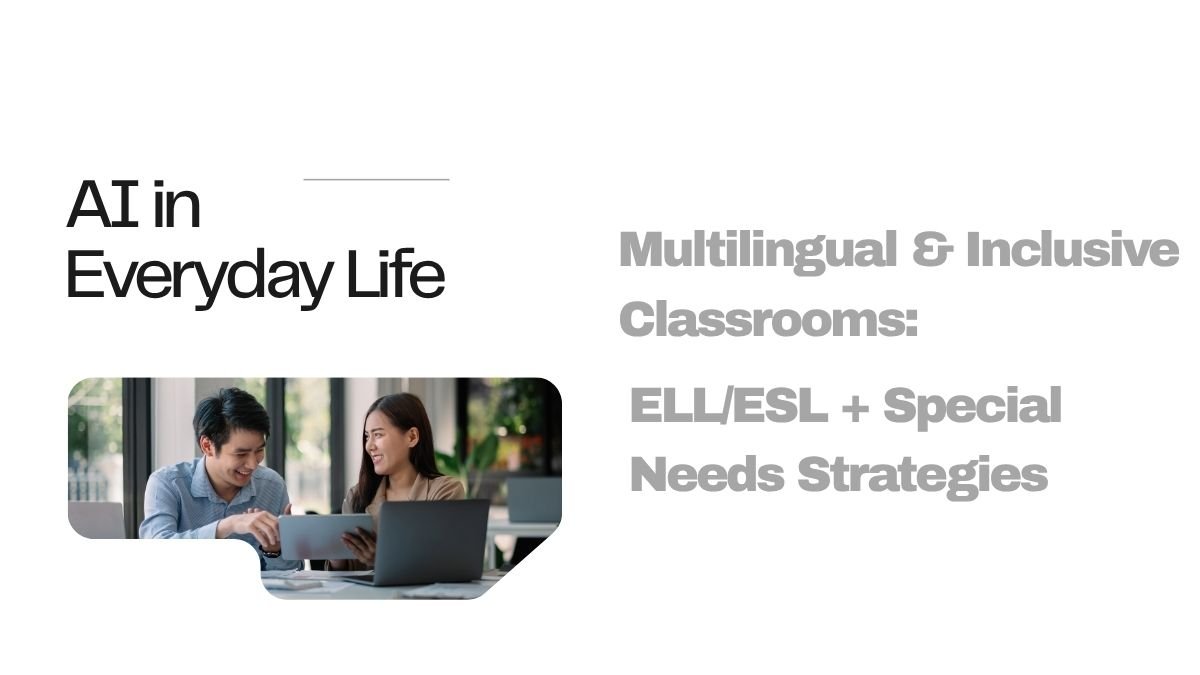National Pfiefer and Jamilah E. Mortiz
The classroom settings of today are more diverse than the past. It gives a place to the children with different languages, values, and needs to learn together. In such an environment, the most important role for the teacher is to make each child feel welcomed and empowered.
Especially where the students are English Language Learners (ELL/ESL) or those with any other special need, teachers need to be super creative and flexible.
Here are some measures that could be adopted to create an inclusive and enabling environment for all children in the classroom.
Strategies for Multi-Lingual Students (ELL/ESL)
1. Culturally Sensitive Classroom Environment
Create a warm and welcoming atmosphere in the classroom. Learn how to pronounce the students’ names and use them correctly. Recognize and integrate their culture into the classroom. For example, stage a small activity around the Chinese New Year for a child from China. This act would leave the child with immense pride, while other students learn about the new culture.
2. Clear and Visual Communication
Speak slowly, with pauses in between sentences, and use pictures, hand gestures, and charts to reduce the language barrier. For example, when teaching the “Water Cycle”, instead of talking it out while doing the drawings, it is best to conceptualize first on paper since it enhances faster understanding.
3. Encourage Use of Home Language
Let the students use their mother tongue at all times. It is a sort of encouragement. The child from Hindi should be able to solve math problems first in Hindi and then write it in English. This speeds up the process of learning.
4. Guided Socialization
These students must work with either a peer partner or a mentor. This peer will assist them in understanding and practicing the content. For instance, when the ELL students are working in partners’ time, assign them with a peer who speaks fluent English.
5. Strategic Group Work
At times, children should just be grouped for practice. Make sure that every group has a student who can assist with the language.
6. Language Support
When showing a film, see Closed Captioning. Hold audio plus tools used to read for both language and reading development.
Strategies for Students with Special Needs:
1. Differentiated Instructions
No child learns in the same way. Special needs students should be instructed using a curriculum designed uniquely for them.
The latter could be an example where students with writing difficulties could have their answers taken orally.
2. Flexible Seating
Arrange the seating according to personal requirements.
- Children with a hearing impairment should be seated close to the teacher.
3. Clear Directions
Brief descriptions should consist of simple and step-by-step guidelines presented at all times. Sometimes asking for an example from students will help in confirming that they comprehend correctly.
4. Provision of Visuals
In this sense, visual charts and picture cards serve as rule and routine reminders. Eg: classroom routine pictures; board against first reading, activities, and revision.
Joint Strategies to Create an Inclusive Classroom
1. Partnership
Create a planning team with ESL teachers and specialists in inclusivity. Teamwork is essential for a clear understanding and meeting of every student’s needs.
2. Engage Families
The parents and the family are the best source of information about what is best for the child. They know best about the child’s individual learning styles and what challenges the child may face at home.
3. Understanding of “Silent Period”
Typically, in the initial stages, ELLs have a “Silent Period” characterized by understanding and listening far more than speaking. The teacher needs to show a high level of patience and give them time.
4. Sense of Community (Classroom Community)
All students need to be given something to accomplish in common. For example, in a group activity, one student could make a poster, another write, and a third will speak.
Conclusion
An inclusive classroom is where every child can be emotionally secure and productive when they come from different languages or with special assistance.
Supports for ELL: language, visual aids, and cultural respect. Clear instruction, flexible seating arrangements, and aids for students with special needs.
And really, the collaboration between teachers, family, and specialists. Thus, a classroom is turned into a learning environment, which, more importantly, is nurturing and secure for an assorted group of children to fulfill their utmost potential.







